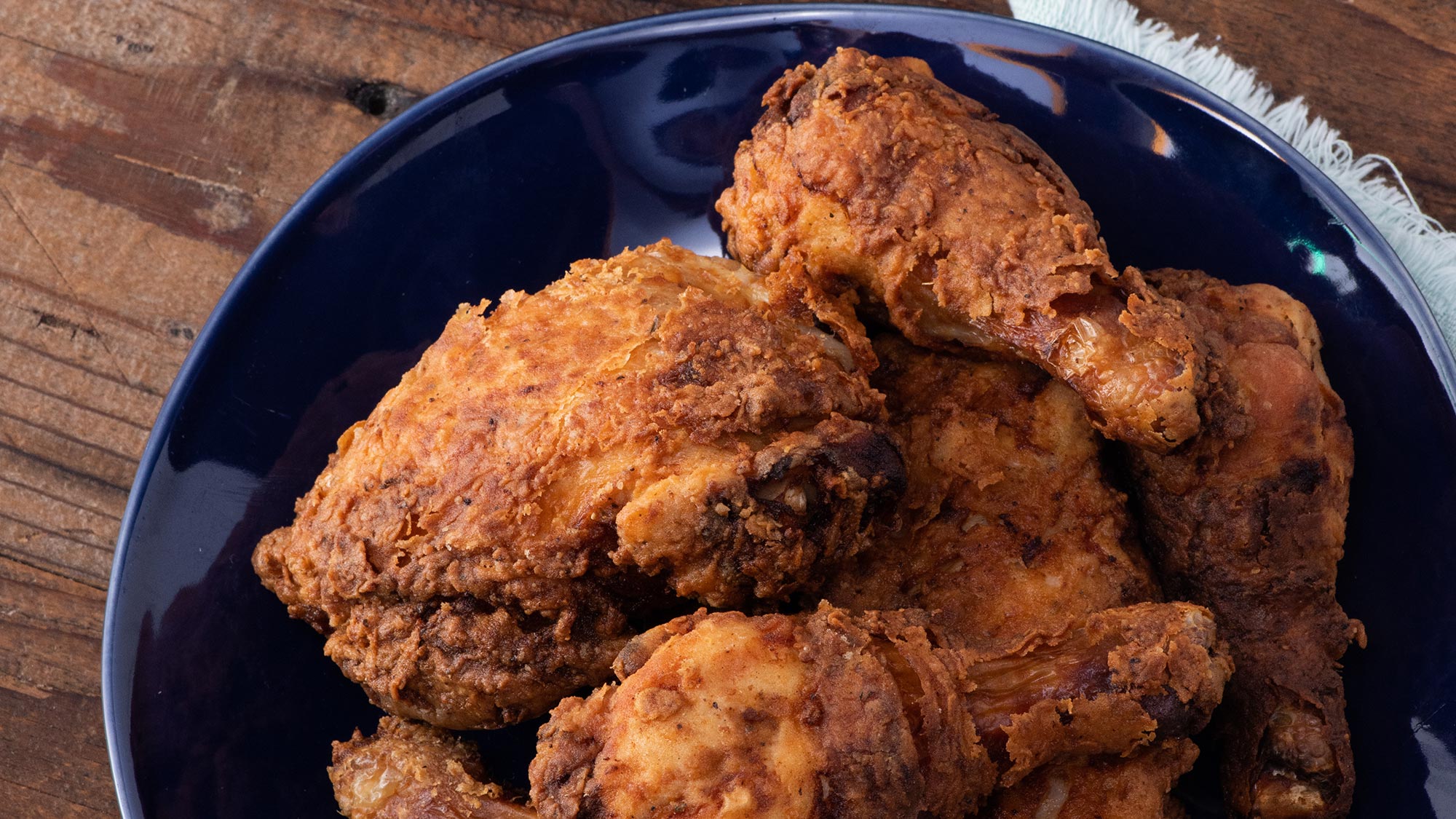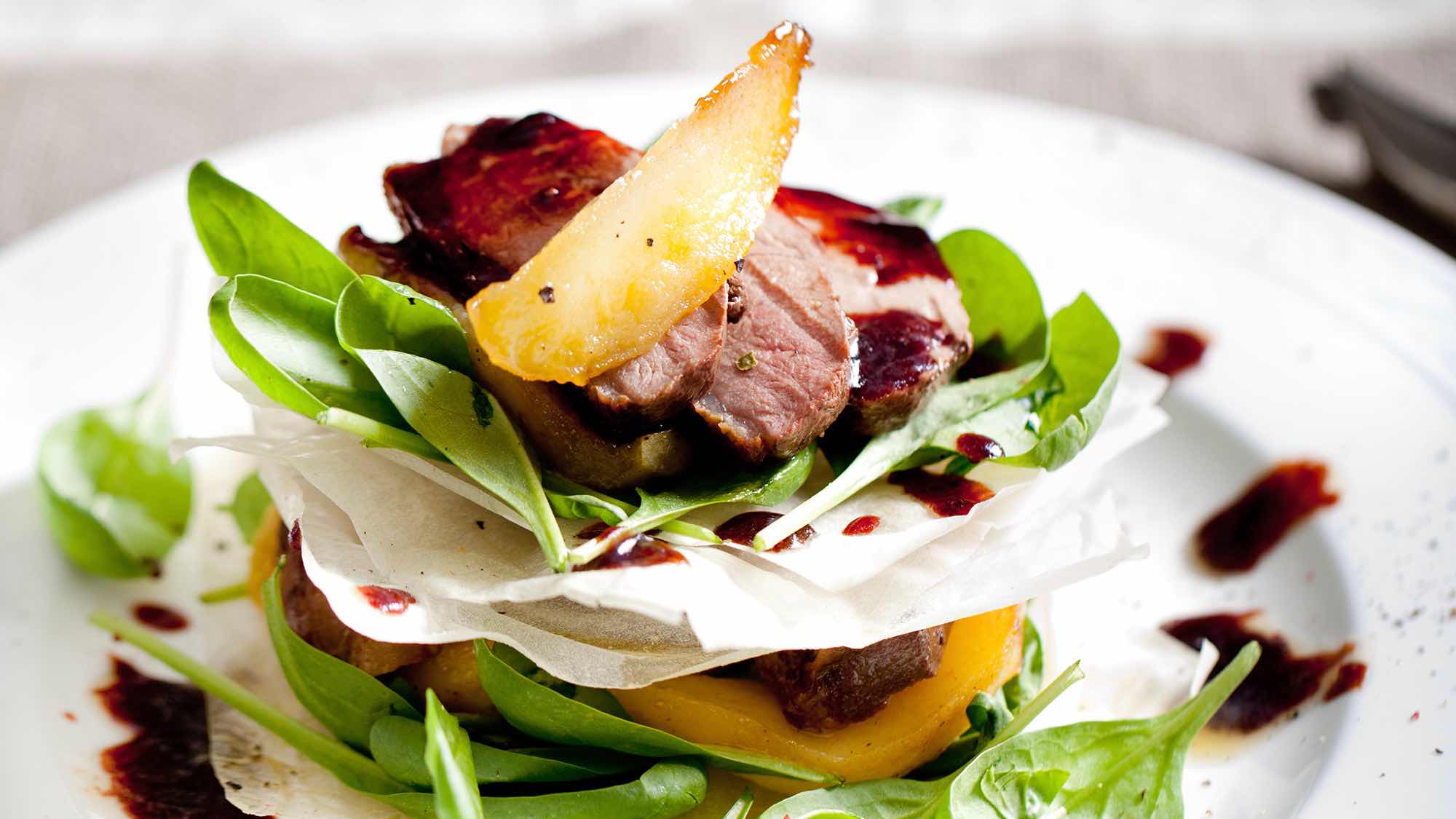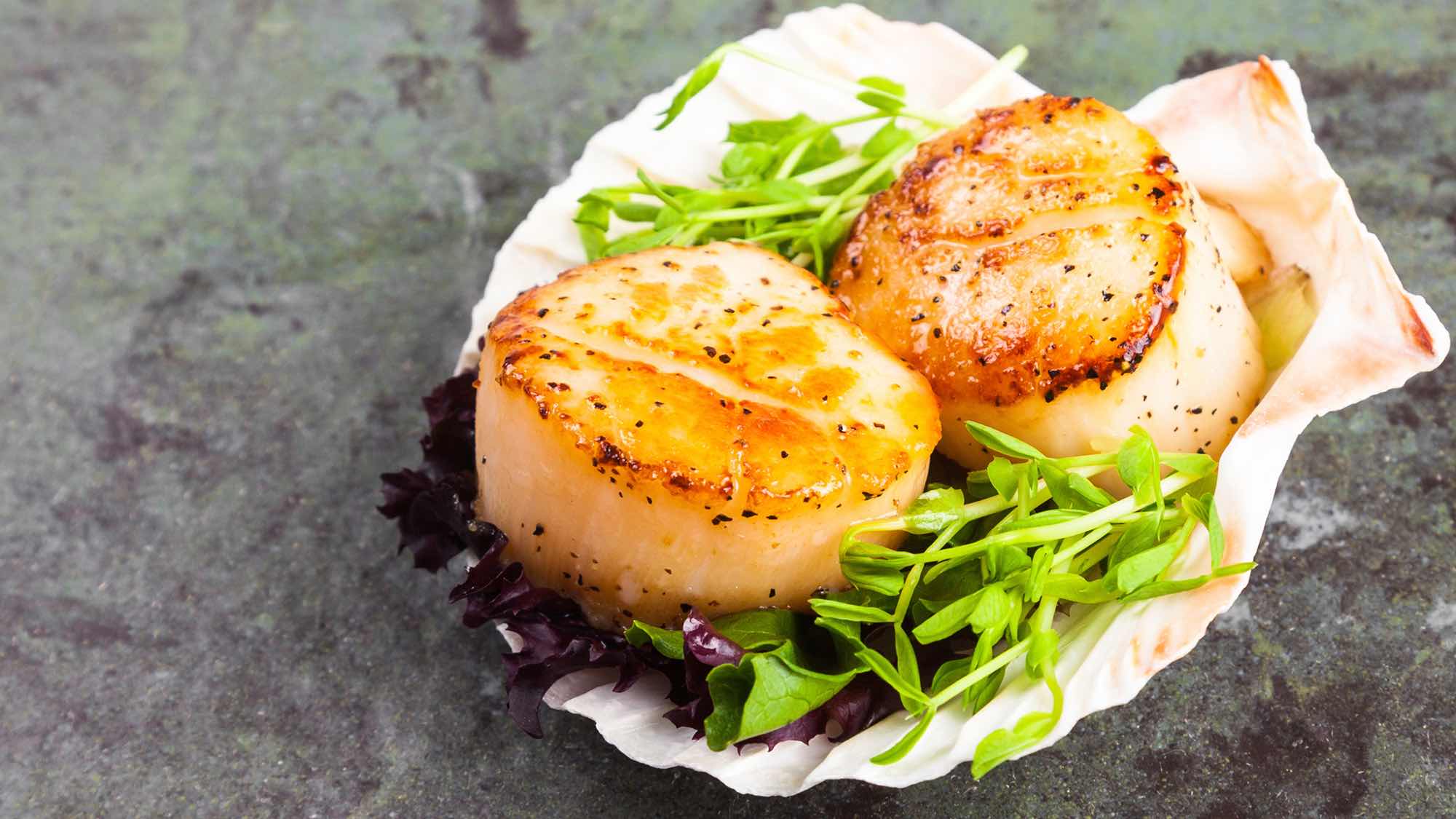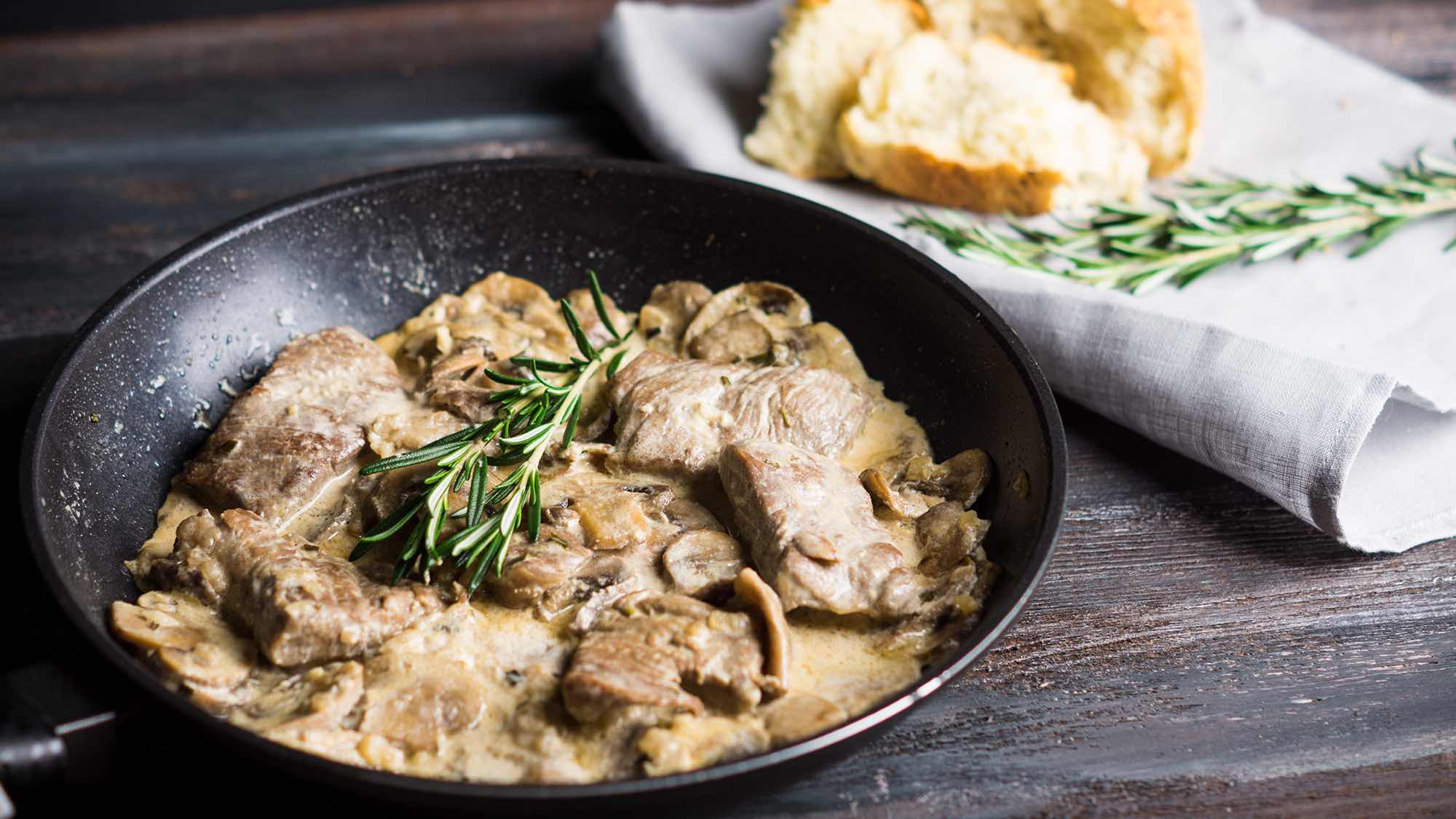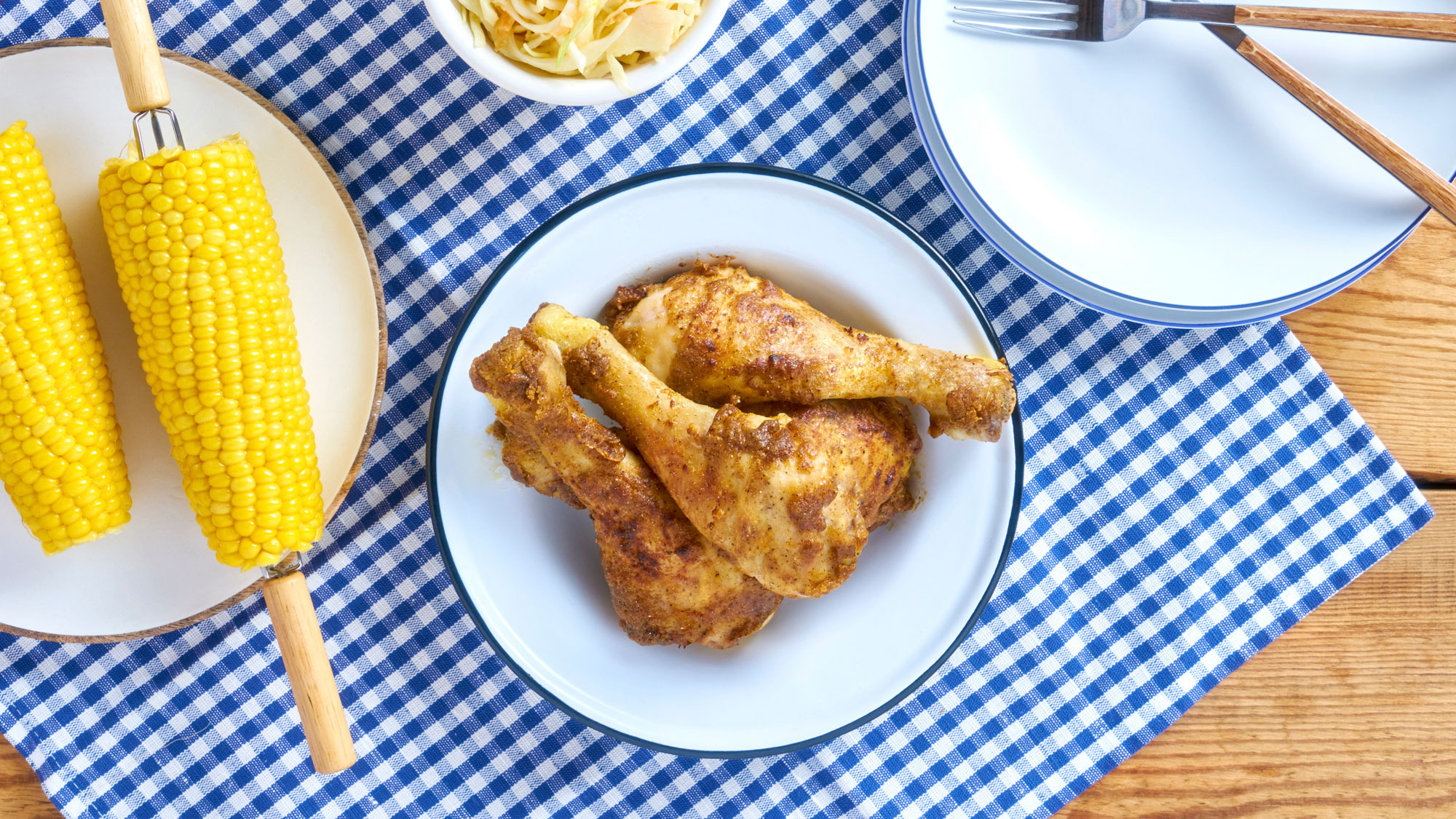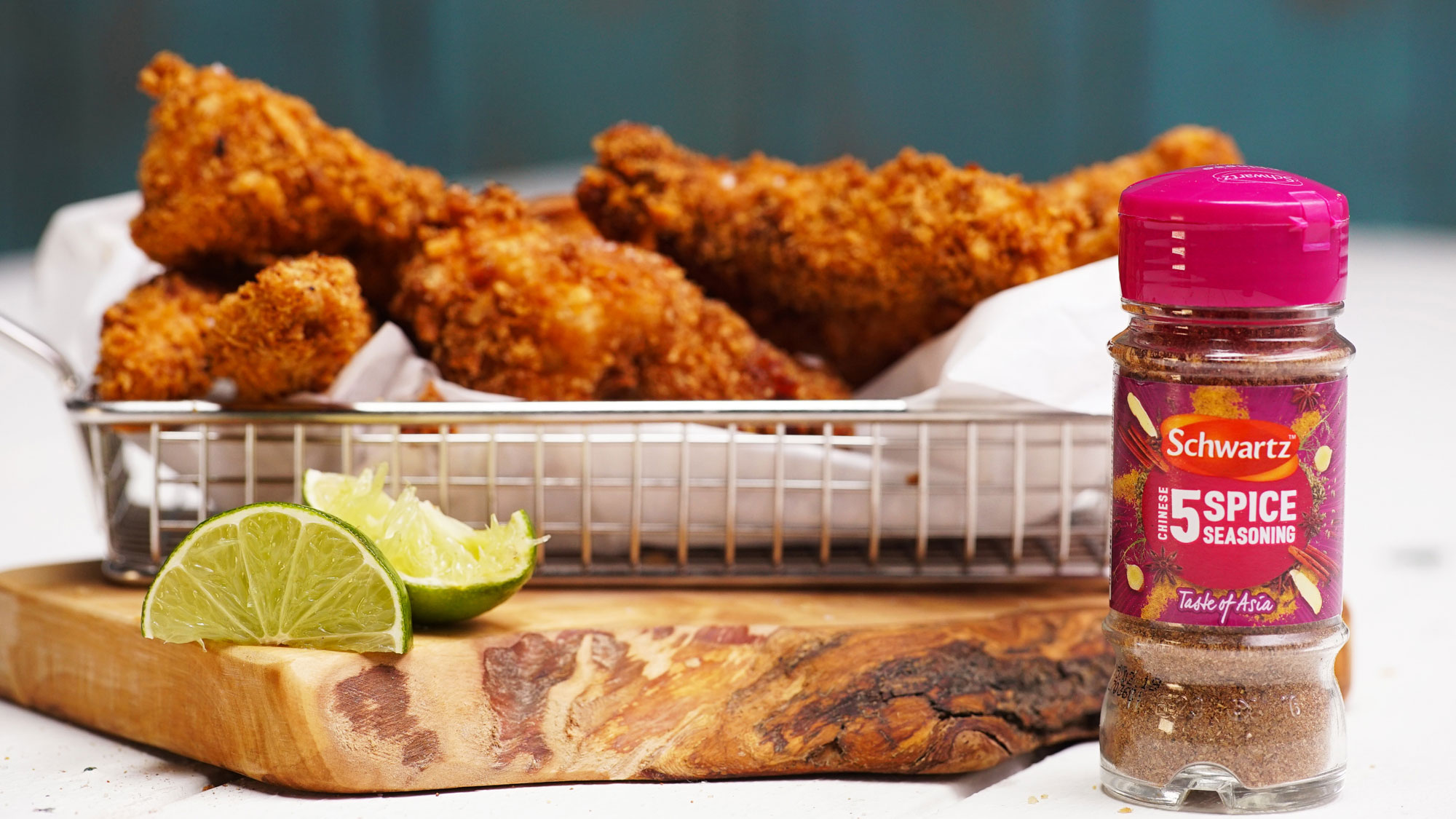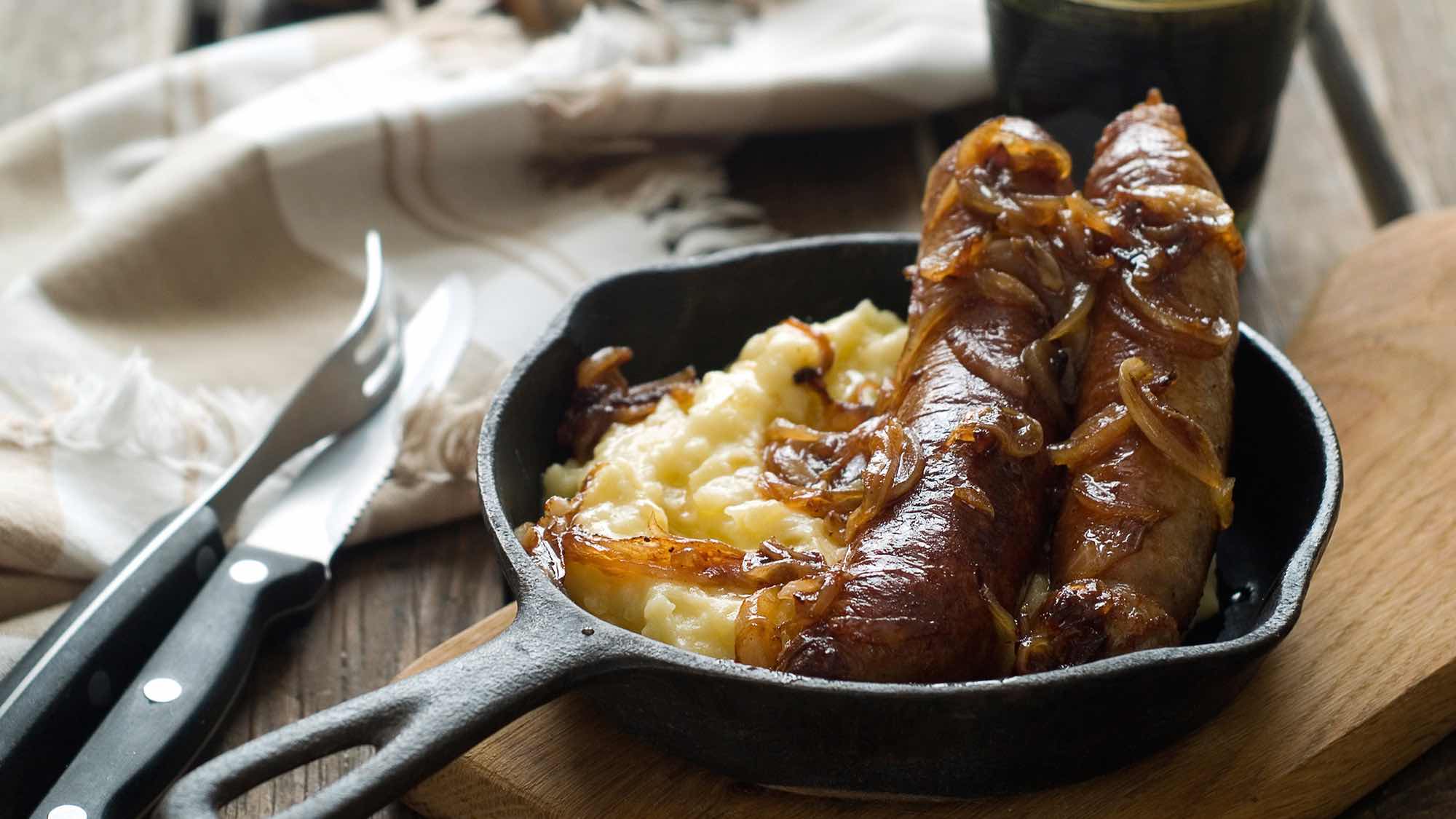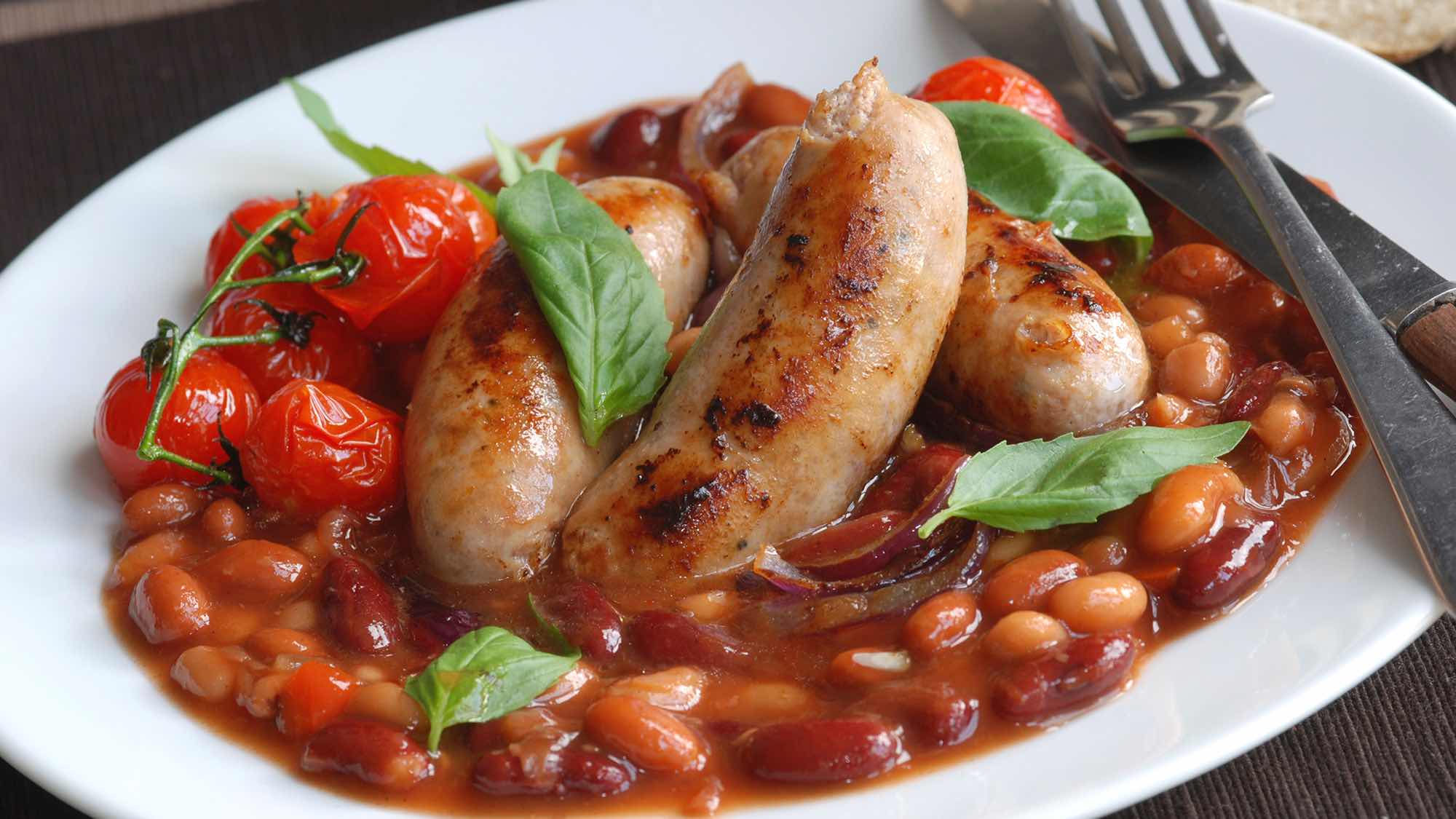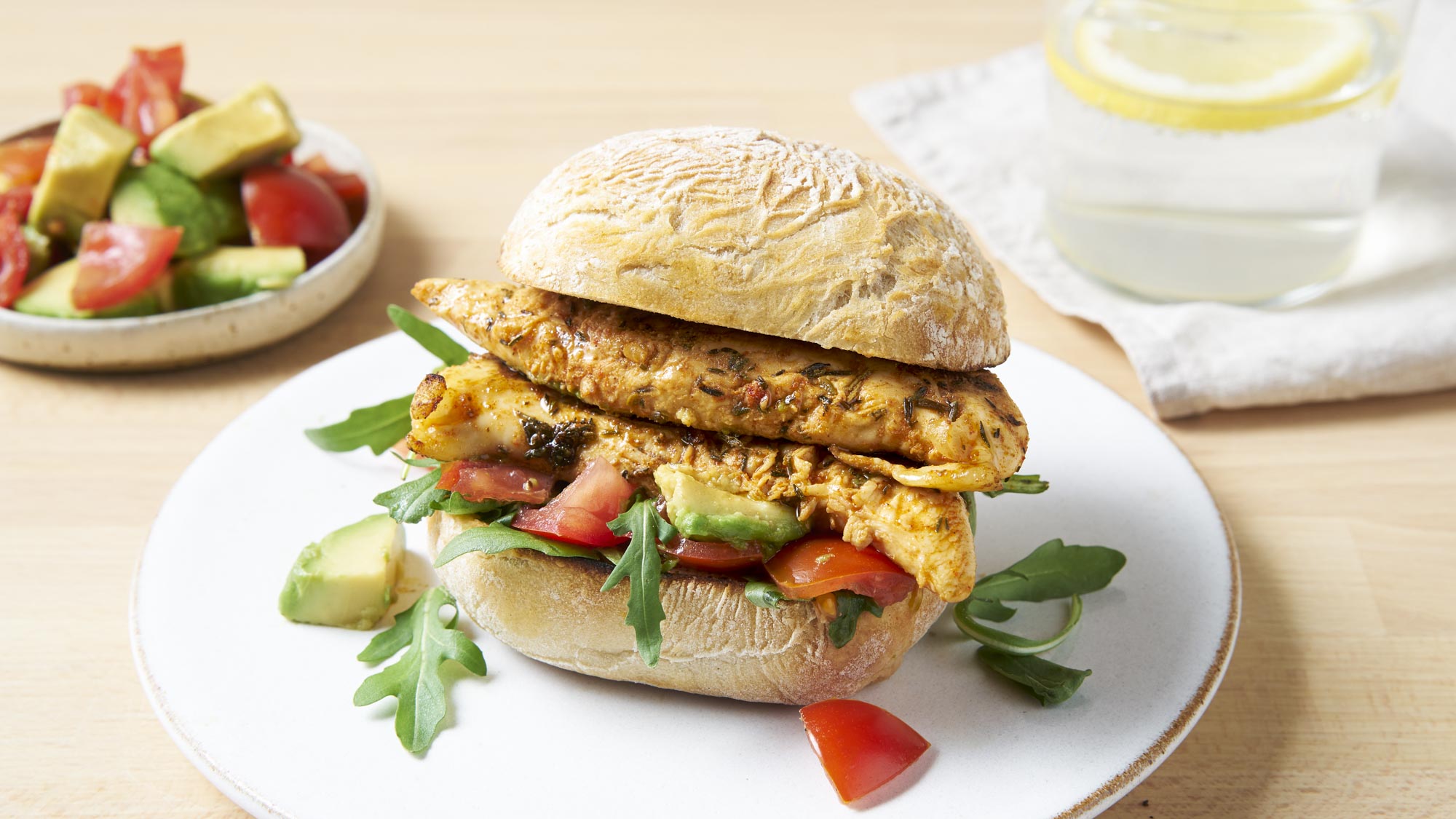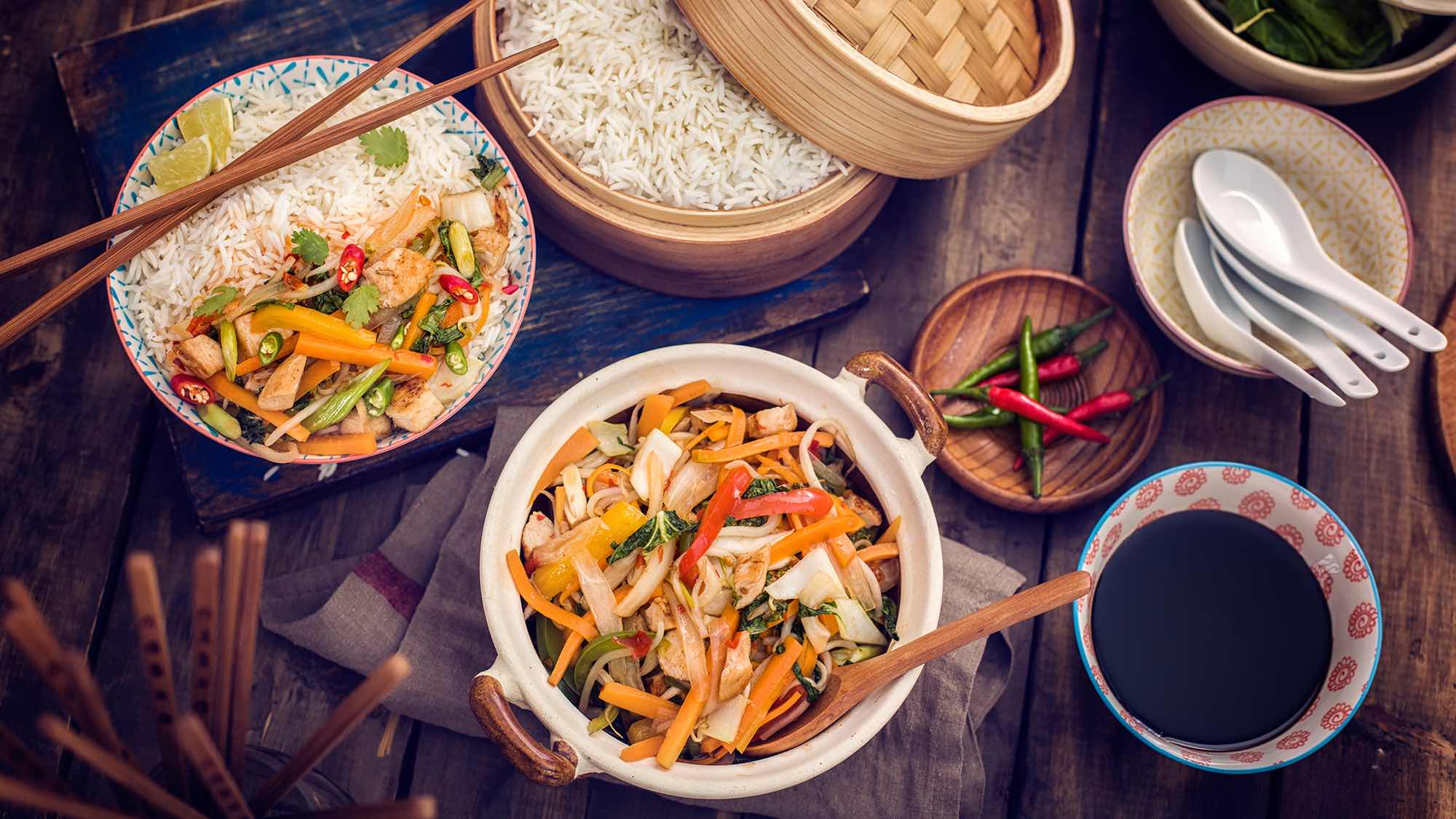A Guide to Frying Food
When it comes to phenomenal flavour, fried food is hard to resist. From crispy and delicious deep fried garlic mushrooms and succulent fried chicken, frying food is often the best way to achieve irresistible flavour and texture in a flash. No other cooking method delivers a crunchy, golden crumb while keeping food moist and tender on the inside.
For many people though, frying food can be a little intimidating. Cooking with hot oil presents a few hazards that you should be mindful of in the kitchen. Too hot and your food will burn, too cold and you risk your recipe becoming soggy and inedible. On the surface, frying can seem like a complicated technique, but with a little forward planning and some education about cooking with hot oil, you’ll be frying your way to delicious snacks and meals in no time.
Frying food can be one of the quickest and easiest cooking methods, allowing you to whip up everything from classic Chinese style egg fried rice to complex dinner party recipes like Latin American inspired spiced duck arepas with blueberry port sauce. This handy guide covers simple techniques for frying all kinds of food.
How to fry food
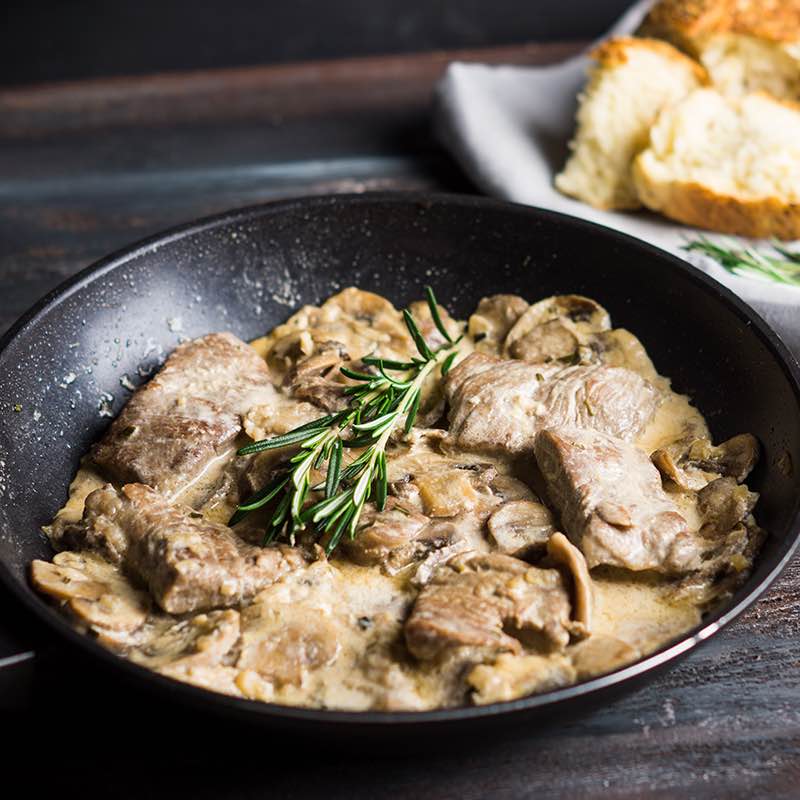
There are several different ways to fry food, and each of the methods depends on the type of result you want to achieve.
- Sautéing refers to frying food quickly in a relatively small amount of oil or fat, and is commonly used to cook thinner cuts of meat and tender vegetables such as green beans, mushrooms and asparagus.
- Shallow frying refers to cooking food partly submerged in hot oil - usually in a frying pan - being careful not to overfill the pan. This method is commonly used to lightly brown specific ingredients such as eggs, scallops, fish fillets and sausages and pan fried pork steaks.
- Deep frying refers to cooking food totally submerged in hot oil or fat, usually in a deep saucepan or a deep fat fryer. Common foods that are deep fried include Southern fried chicken,
Most of the time, fried food will develop a crunchy or crispy outer texture. This is because when food is added to hot oil, its surface dehydrates and forms a crust that inhibits further oil absorption. Heat is conducted to the inside of the food, where any proteins in meat or starches are broken down to a soft and tender texture, which is why frying produces the same result across food groups, giving a distinct mouthfeel to foods such as French fries, fried chicken and fried halloumi.
Maintaining an even temperature
No matter what frying method you are using, maintaining a consistent temperature is vital to ensure your food doesn’t end up too soggy or on the opposite end of the spectrum, burnt. If the temperature drops too low, the crust forms slowly, allowing the food to absorb more fat and become greasy. If the oil gets too hot, the food burns on the surface before it cooks through. Almost all vegetable oils make good choices for frying, since their smoke points are higher than common frying temperatures, ranging from 410°F (olive oil) to 435°F (canola oil) to 445°F (grapeseed oil) to 450°F (peanut oil).
How long to fry chicken
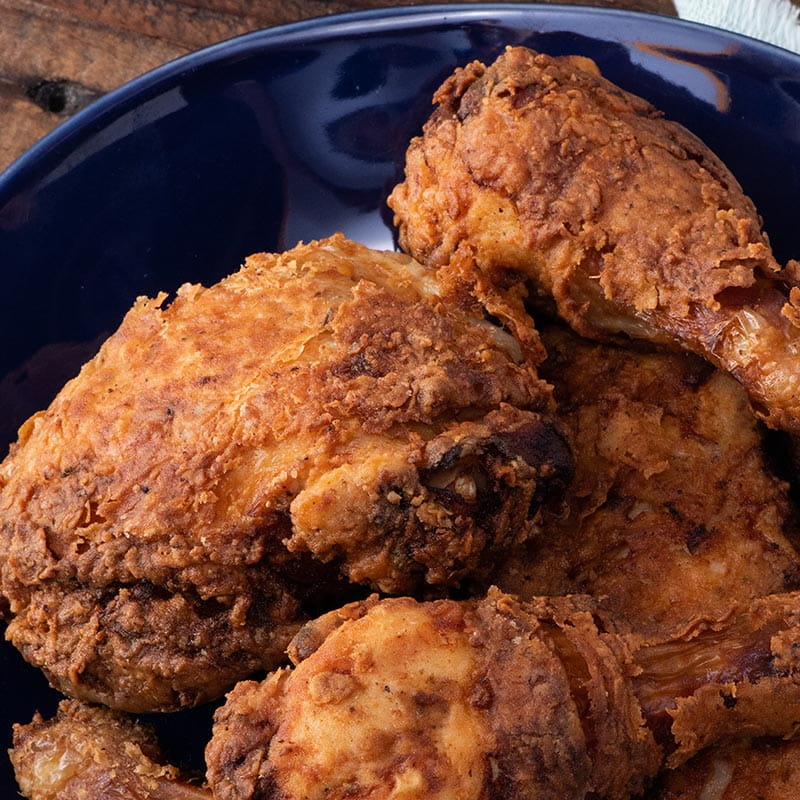
Whether you are whipping up a comforting batch of buttermilk fried chicken with slaw or Asian inspired chicken dippers flavours with Chinese 5 Spice seasoning, chicken is one of the greatest ingredients to deep fry to crispy perfection.
With classic fried chicken, you will need to ensure the skin develops a deep golden brown crust. If you are using a cooking thermometer, insert it into the thickest part of the chicken. It should register 165°. This usually equates to around 10 minutes for wings and 12 minutes for breasts, thighs and legs.
For the best tasting fried chicken with a beautifully even golden crumb, turn your chicken pieces with tongs (being careful not to splash yourself with hot oil) every 1 – 2 minutes. Be sure to maintain a consistent temperature to ensure the meat is cooked throughout.
How long to fry sausages
Sausages are an eternal favourite at the dinner table, and there are so many methods of cooking them. Lots of people like to bake sausages, but this can cause them to become dry. Whether you’re having classic Cumberland sausages with caramelized onion gravy for tea or adding them to a delicious sausage and baked bean casserole, shallow frying is a great method for perfectly sizzled sausages. Simply add 1 tbsp oil to a frying pan and apply a high heat. When you are ready, turn the heat down to medium-low and add your link of sausages. Cook gently in the oil, turning frequently to ensure the sausages are browned on the outside cooked evenly throughout.
How long to fry chicken breast
If you are pan frying chicken breast for a succulent lemon and thyme chicken ciabatta sandwich or sizzling slender strips of chicken breast for a delicious spicy stir fry, shallow frying chicken couldn’t be easier. Diced chicken and chicken strips tend to take around 8 minutes to cook all the way through. If you are cooking whole pieces of chicken, white means cooks faster than dark meat, but as a good rule of thumb, you should fry for a total of about 15 minutes. Be careful to turn the meat every few minutes until it is evenly browned.
Now you know how to fry food, it’s time to put your skills to practice! Our catalogue of recipes include many inspiring fried dishes that will wow your friends and family.





